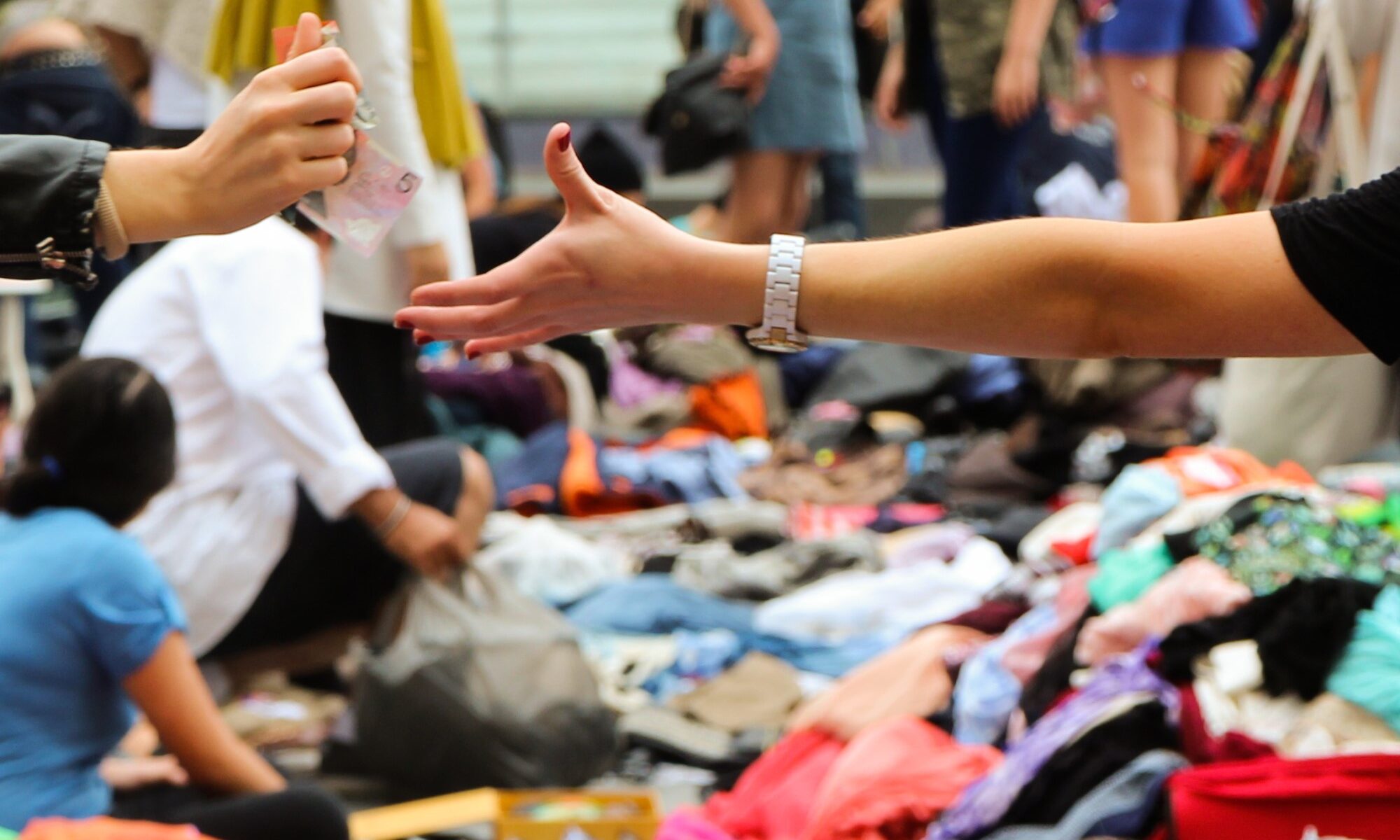This semester I’ve been 1) applying for jobs, and 2) running a job search to select a team of undergraduate researchers. This has resulted in a curious experience. As an employer, I’ve been tempted to use various techniques in running my job search that, as an applicant, I’ve found myself lamenting. Similarly, as an applicant, I’ve made changes to my application materials designed to frustrate those very purposes I have as an employer.
The source of the experience is that the incentives of search committees and the incentives job applicants don’t align. As an employer, my goal is to select the best candidate for the job. While as an applicant, my goal is that I get a job, whether I’m the best candidate or not.
As an employer, I want to minimize the amount of work it takes for me to find a dedicated employee. Thus, as an employer, I’m inclined to add ‘hoops’ to the application process, by requiring applicants to jump through those hoops, I make sure I only look through applications of those who are really interested in the job. But as an applicant, my goal is to minimize the amount of time I spend on each application. Thus, I am frustrated with job applications that require me to develop customized materials.
In this post, I want to do three things. First, I want to describe one central problem I see with application systems — what I will refer to as the ‘treadmill problem.’ Second, I want to propose a solution to this problem — namely the use of lotteries to select candidates. Third, I want to address an objection employers might have to lotteries — namely that it lowers the average quality of an employer’s hires.
Part I—The Treadmill Problem
As a job applicant, I care about the quality of my application materials. But I don’t care about the quality intrinsically. Rather, I care about the quality in relation to the quality of other applications. Application quality is a good, but it is a positional good. What matters is how strong my applications are in comparison to everyone else.
Take as an analogy the value of height while watching a sports game. If I want to see what is going on, it’s not important just to be tall, rather it’s important to be taller than others. If everyone is sitting down, I can see better if I stand up. But if everyone stands up, I can’t see any better than when I started. Now I’ll need to stand on my tiptoes. And if everyone else does the same, then I’m again right back where I started.
Except, I’m not quite back where I started. Originally everyone was sitting comfortably. Now everyone is craning uncomfortably on their tiptoes, but no one can see any better than when we began.
Job applications work in a similar way. Employers, ideally, hire whosoever application is best. Suppose every applicant just spends a single hour pulling together application materials. The result is that no application is very good, but some are better than others. In general, the better candidates will have somewhat better applications, but the correlation will be imperfect (since the skills of being good at philosophy only imperfectly correlate with the skills of being good at writing application materials).
Now, as an applicant, I realize that I could put in a few hours polishing my application materials — nudging out ahead of other candidates. Thus, I have a reason to spend time polishing.
But everyone else realizes the same thing. So, everyone spends a few hours polishing their materials. And so now the result is that every application is a bit better, but still with some clearly better than others. Once again, in general, the better candidates will have somewhat better applications, but the correlation will remain imperfect.
Of course, everyone spending a few extra hours on applications is not so bad. Except that the same incentive structure iterates. Everyone has reason to spend ten hours polishing, now fifteen hours polishing. Everyone has reason to ask friends to look over their materials, now everyone has reason to hire a job application consultant. Every applicant is stuck in an arms race with every other, but this arms race does not create any new jobs. So, in the end, no one is better off than if everyone could have just agreed to an armistice at the beginning.
Job applicants are left on a treadmill, everyone must keep running faster and faster just to stay in place. If you ever stop running, you will slide off the back of the machine. So, you must keep running faster and faster, but like the Red Queen in Lewis Carrol’s Through the Looking Glass, you never actually get anywhere.
Of course, not all arms races are bad. A similar arms race exists for academic journal publications. Some top journals have a limited number of article slots. If one article gets published, another article does not. Thus, every author is in an arms race with every other. Each person is trying to make sure their work is better than everyone else’s.
But in the case of research, there is a positive benefit to the arms race. The quality of philosophical research goes up. That is because while the quality of my research is a positional good as far as my ability to get published, it is a non-positional good in its contribution to philosophy. If every philosophy article is better, then the philosophical community is, as a whole, better off. But the same is not true of job application materials. No large positive externality is created by everyone competing to polish their cover letters.
There may be some positive externalities to the arms race. Graduate students might do better research in order to get better publications. Graduate students might volunteer more of their time in professional service in order to bolster their CV.
But even if parts of the arms race have positive externalities, many other parts do not. And there is a high opportunity cost to the time wasted in the arms race. This is a cost paid by applicants, who have less time with friends and family. And a cost paid by the profession, as people spend less time teaching, writing, and helping the community in ways that don’t contribute to one’s CV.
This problem is not unique to philosophy. Similar problems have been identified in other sorts of applications. One example is grant writing in the sciences. Right now, top scientists must spend a huge amount of their time optimizing grant proposals. One study found that researchers collectively spent a total of 550 working years on grant proposals for Australia’s National Health and Medical Research Council’s 2012 funding round.
This might have a small benefit in leading research to come up with better projects. But most of the time spent in the arms race is expended just so everyone can stay in place. Indeed, there are some reasons to think the arms race actually leads people to develop worse projects, because scientists optimize for grant approval and not scientific output.
Another example is college admissions. Right now, high school students spend huge amounts of time and money preparing for standardized tests like the SAT. But everyone ends up putting in the time just to stay in place. (Except, of course, for those who lack the resources required to put in the time; they just get left behind entirely.)
Part II—The Lottery Solution
Because I was on this treadmill as a job applicant, I didn’t want to force other people onto a treadmill of their own. So, when running my own job search, I decided to modify a solution to the treadmill problem that has been suggested for both grant funding and college admissions. I ran a lottery. I had each applying student complete a short assignment, and then ‘graded’ the assignments on a pass/fail system. I then choose my assistants at random from all those who had demonstrated they would be a good fit. I judged who was a good fit. I didn’t try to judge, of those who were good fits, who fit best.
This allowed students to step off the treadmill. Students didn’t need to write the ‘best’ application. They just needed an application that showed they would be a good fit for the project.
It seems to me that it would be best if philosophy departments similarly made hiring decisions based on a lottery. Hiring committees would go through and assess which candidates they think are a good fit. Then, they would use a lottery system to decide who is selected for the job.
The details would need to be worked out carefully and identifying the best system would probably require a fair amount of experimentation. For example, it is not clear to me the best way to incorporate interviews into the lottery process.
One possibility would be to interview everyone you think is likely a good fit. This, I expect, would prove logistically overwhelming. A second possibility, and I think the one I favor, would be to use a lottery to select the shortlist of candidates, rather than to select the final candidate. The search committee would go through the application and identify everyone who looks like a good fit. They would then use a lottery to narrow down to a shortlist of three to five candidates who come out for an interview. While the shortlisted candidates would be placed on the treadmill, a far smaller number of people are subject to the wasted effort. A third possibility would use the lottery to select a single final candidate, and then use an in-person interview merely to confirm the selected candidate really is a good fit. There is a lot of evidence that hiring committees systematically overweight the evidential weight of interviews, and that this creates tons of statistical noise in hiring decisions (see chapters 11 and 24 in Daniel Kahneman’s book Noise).
Assuming the obstacles could be overcome, however, lotteries would have an important benefit in going some way towards breaking the treadmill.
There are a range of other benefits as well.
- Lotteries would decrease the influence of bias on hiring decisions. Implicit bias tends to make a difference in close decisions. Thus, bias is more likely to flip a first and second choice, than it is to flip someone from making it onto the shortlist in the first place.
- Lotteries would decrease the influence of networking, and so go some way towards democratizing hiring. At most, an in-network connection will get someone into the lottery but it won’t increase you chance of winning the lottery.
- It would create a more transparent way to integrate hiring preferences. A department might prefer to hire someone who can teach bioethics, or might prefer to hire a female philosopher, but not want to restrict the search to people who meet such criteria. One way to integrate such preferences more rigorously would be to explicitly weight candidates in the lottery by such criteria.
- Lotteries could decrease interdepartmental hiring drama. It is often difficult to get everyone to agree on a best candidate. It is generally not too difficult to get everyone to agree on a set of candidates all who are considered a good fit.
Part III—The Accuracy Drawback
While there are advantages accrue to applicants and the philosophical community, employers might not like a lottery system. The problem for employers is that a lottery will decrease the average quality of hires.
A lottery system means you should expect to hire the average candidate who meets the ‘good fit’ criteria. Thus, as long as trying to pick the best candidate results in a candidate at least above average, then the average quality of the hire goes down with a lottery.
However, while there is something to this point, the point is weaker than most people think. That is because humans tend to systematically overestimate the reliability of judgment. When you look at the empirical literature a pattern emerges. Human judgment has a fair degree of reliability, but most of that reliability comes from identifying the ‘bad fits.’
Consider science grants. Multiple studies have compared the scores that grant proposals receive to the eventual impact of research (as measured by future citations). What is found is that scores do correlate with research impact, but almost all of that effect is explained by the worst performing grants getting low scores. If you restrict your assessment to the good proposals, researchers are terrible at judging which of the good proposals are actually best. Similarly, while there is general agreement about which proposals are good and which bad, evaluators rarely agree about which proposals are best.
A similar sort of pattern emerges for college admission counselors. Admissions officers can predict who is likely to do poorly in school, but can’t reliably predict which of the good students will do best.
Humans are fairly good at judging which candidates would make a good fit. We are bad at judging which good fit candidates would actually be best. Thus, most of the benefit of human judgment comes at the level of identifying the set of candidates who would make a good fit, not at the level of deciding between those candidates. This, in turn, suggests that the cost to employers of instituting a lottery system is much smaller than we generally appreciate.
Of course, I doubt I’ll convince people to immediately use lotteries on major important decisions. Thus, for now I’ll suggest that for smaller less consequential decisions, try a lottery system. If you are a graduate department, select half your graduating class the traditional way, and half by a lottery of those who seem like a good fit. Don’t tell faculty which are which, and I expect several years later it will be clear that the lottery system works just as well. Or, like me, if you are hiring some undergraduate researchers, try the lottery system. Make small experiments and let’s see if we can’t buck the current status quo.














